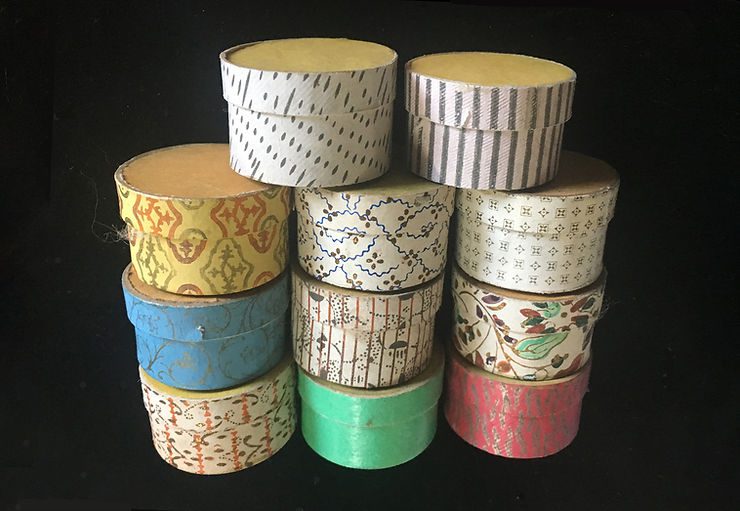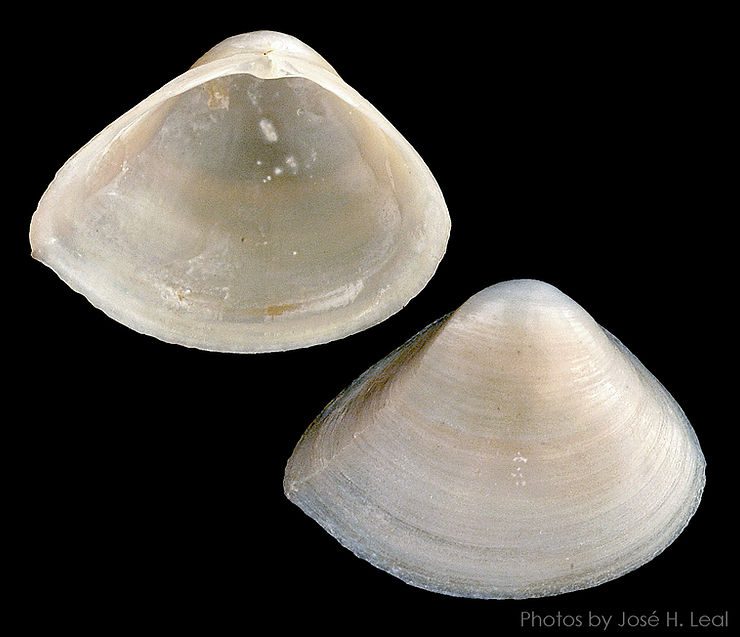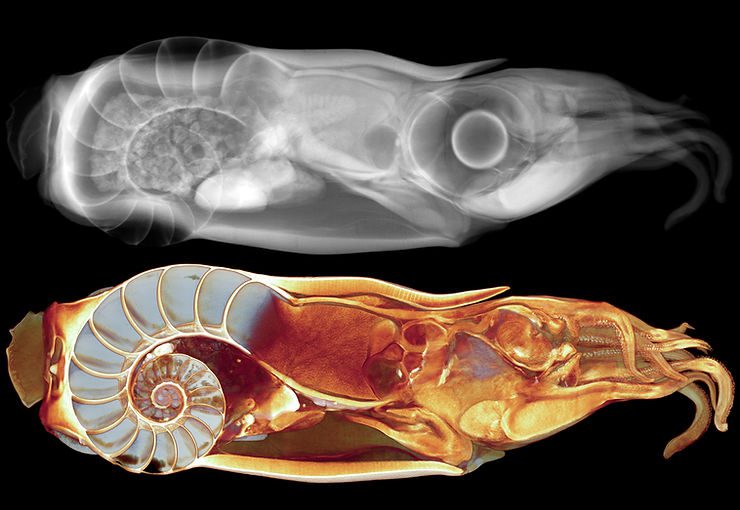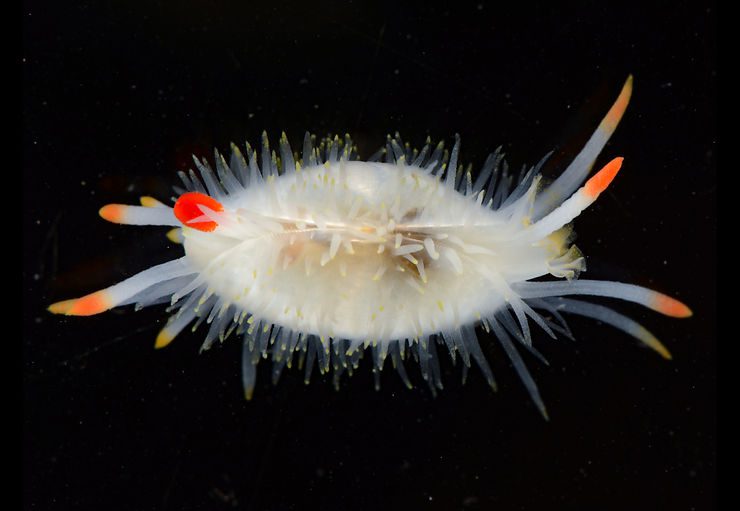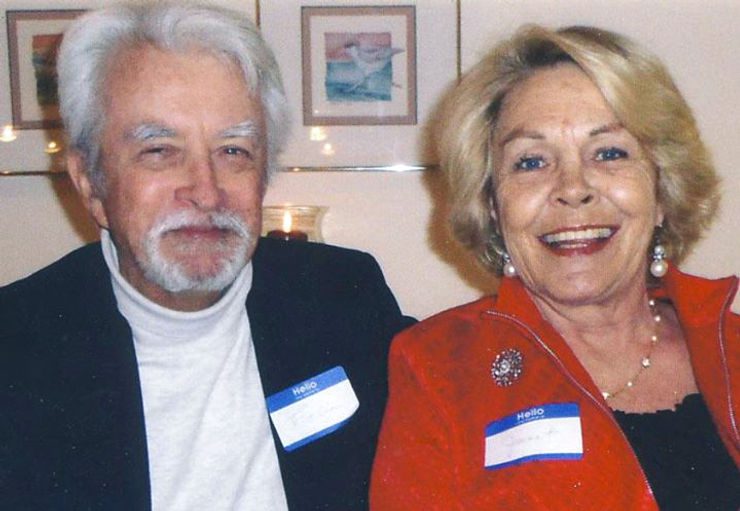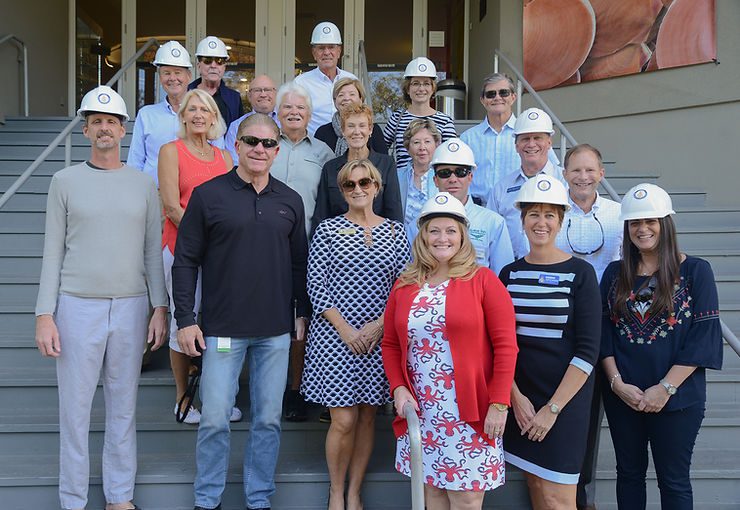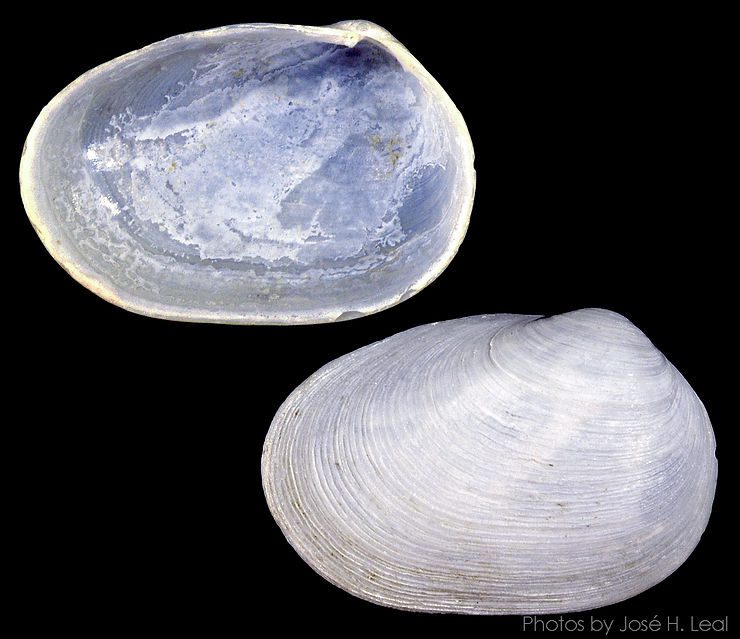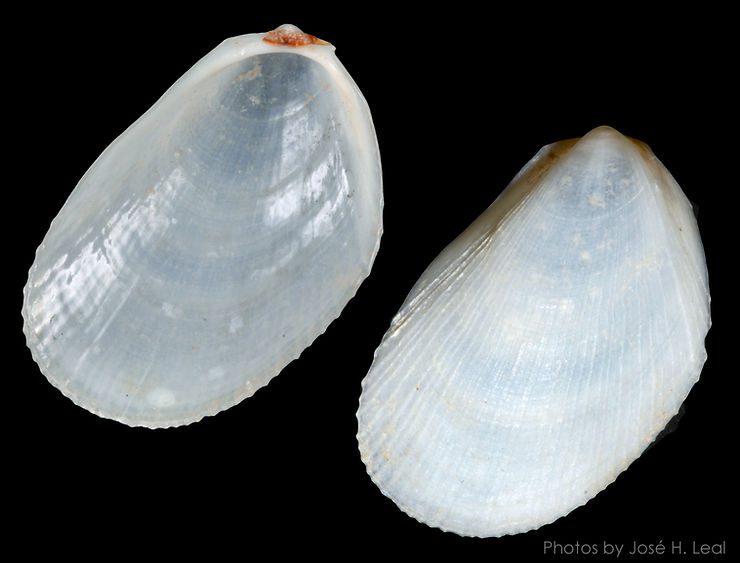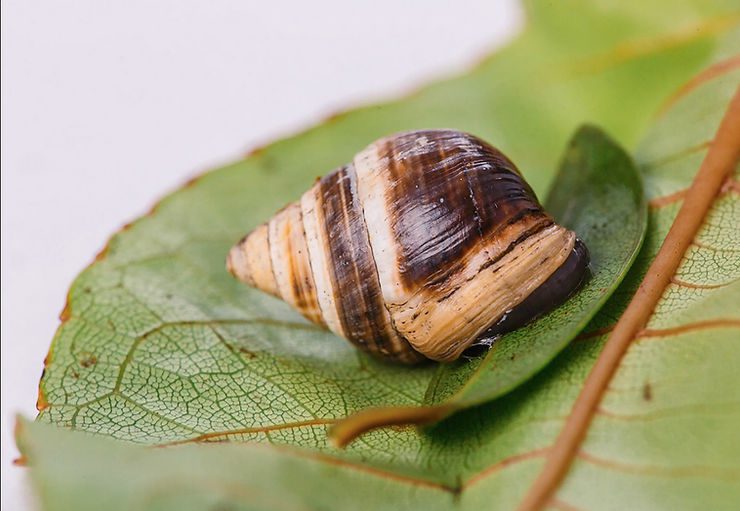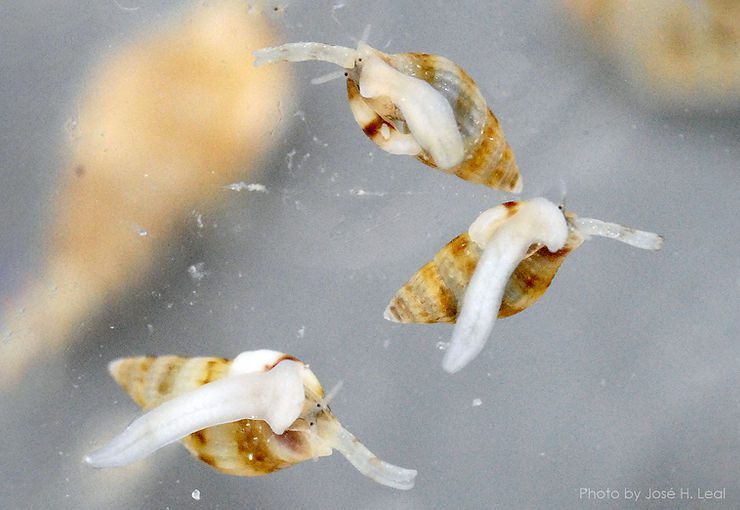
Upside-down Snails
Fat Dove Snails, Parvanachis obesa (C.B. Adams, 1845), are capable of "crawling upside down" under the water surface, or the air-water interface. They do that by taking advantage of the surface tension present (caused in turn by the cohesive forces among water molecules). Fat Dove Snails are very small, at about 0.5 mm (0.02 inch) in maximum size. The smaller the animals, the easier it will be for them to crawl along the air-water interface. The same is true for insects, spiders, and other air-
